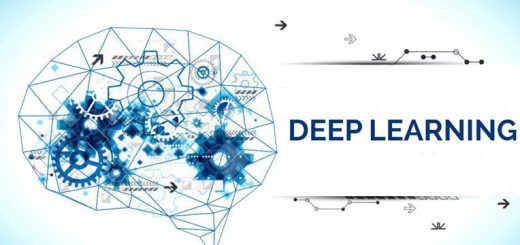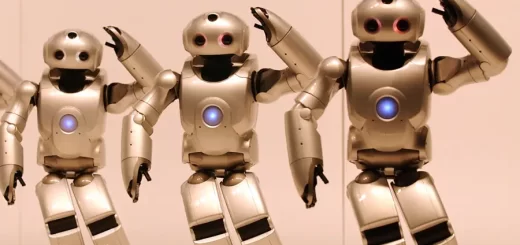NASA Valkyrie robot advantages, disadvantages and What does the NASA Valkyrie do?
Valkyrie can be designed to withstand harsh environments, protecting astronauts from dangers like radiation or extreme temperatures. This allows it to take on risky jobs, keeping humans out of harm’s way. Valkyrie’s ability to navigate rough terrain and operate remotely could be valuable in search-and-rescue missions after natural disasters on Earth.
NASA Valkyrie robot
Valkyrie’s body is covered in a soft, fabric-like material. This isn’t just cosmetic; it helps protect her delicate inner workings. Valkyrie relies on two powerful computer brains to process information and make decisions. These are commercially available Intel Core i7 processors, the kind you might find in your home computer, but souped up for the robot‘s demanding tasks.
The name Valkyrie comes from the mythical Norse maidens who choose who lives and dies in battle. A fitting name for a powerful and life-saving robot. With its tall stature and glowing NASA emblem, Valkyrie bears an uncanny resemblance to Iron Man, though for much more practical purposes.
While not quite as powerful as Iron Man, Valkyrie can still lift and carry impressive loads for her size. Valkyrie uses a special camera system that combines laser, 3D stereo, and regular video to see the world around her, similar to how some video games create realistic environments.
Valkyrie wasn’t slowly developed over years. A team of engineers designed and constructed her in an impressive nine months. The development of Valkyrie was kept under wraps until it was revealed at a robotics competition. With its imposing stature and glowing chest plate, Valkyrie bears an undeniable resemblance to the iconic superhero Iron Man, though for scientific rather than heroic purposes.
While it looks tough, Valkyrie’s body is covered in a soft, fabric-like material to protect itself and anything it comes in contact with. While normally tethered for power, Valkyrie has a battery pack that allows it to operate for about an hour on its own. Imagine what it could do with a bigger battery!
The development of Valkyrie was kept under wraps until it was revealed for the DARPA Robotics Challenge Trials. With its imposing stature and glowing NASA logo, Valkyrie bears an undeniable resemblance to Iron Man, though for much more practical purposes.
Valkyrie has been used to test and refine a special glove technology called the Roboglove. This glove could help humans grip tools for extended periods without fatigue. Valkyrie represents a significant advancement in humanoid robotics. While it has limitations, its potential applications in space exploration and disaster response make it a valuable research project.
Advantages of NASA’s Valkyrie Robot
Valkyrie’s bipedal form with arms and hands allows it to interact with tools and environments designed for humans, reducing the need for modification. This makes it suitable for assisting astronauts on missions and performing tasks in human-built structures, potentially performing tasks astronauts currently do. This can be helpful for maintenance or repair work inside spacecraft.
The robot’s design prioritizes maneuverability and complex movements, allowing it to perform delicate tasks and handle hefty objects. This makes it valuable for intricate repairs or operating heavy machinery. Valkyrie’s body is covered in a soft, fabric-like material. This might make her seem less intimidating and help protect her sensitive internal components.
The technology behind Valkyrie can be adapted for disaster response on Earth. The robot‘s ability to navigate rough terrain and perform tasks remotely could aid in search-and-rescue missions. Valkyrie’s capabilities extend beyond space missions. Its ability to navigate rough terrain and operate remotely makes it a potential asset in disaster response situations.
The robot‘s design emphasizes fine motor control. It can handle complex tasks and operate for extended periods without fatigue. This makes it suitable for intricate jobs or those requiring a long-term presence in hazardous areas. The robot‘s design prioritizes agility. This allows it to operate in cluttered or tight spaces where bulky machines might struggle.
Valkyrie is built to be physically robust, capable of handling heavy objects and withstanding harsh conditions for extended periods. This makes it ideal for laborious or long-duration tasks that would be tiring or dangerous for humans.
Disadvantages of NASA’s Valkyrie Robot
The humanoid design makes Valkyrie a highly complex machine with numerous moving parts. This can lead to challenges in maintenance, repair, and reducing the weight of space travel. The bipedal design with numerous moving parts makes Valkyrie challenging to control and maintain. This complexity can lead to malfunctions and limit its reliability in critical situations.
While Valkyrie can navigate some obstacles, its ability to understand and react to complex environments is still under development. This can limit its effectiveness in unstructured situations. At 6 feet 2 inches and 300 pounds, Valkyrie is not exactly nimble. This can make it difficult to navigate tight spaces or uneven terrain.
Current battery technology limits the robot‘s operational time. Tethers or frequent recharging stations would be necessary for extended use. Developing and maintaining complex humanoid robots like Valkyrie is expensive. This limits the number of units that can be deployed and may restrict their use to high-priority missions.
The robot currently uses hydraulics for actuation and movement, which can be bulky, noisy, and require a significant power source compared to electric alternatives. Newer technologies using electric motors may offer advantages in terms of efficiency and weight. Valkyrie’s advanced design and technology make it expensive to build and maintain.
The bipedal humanoid form is more complex to design and control compared to simpler robots with wheels or treads. This can lead to higher development and maintenance costs. While versatile, Valkyrie might not be optimized for every situation. Uneven terrain or extreme environments could challenge its balance and mobility.



